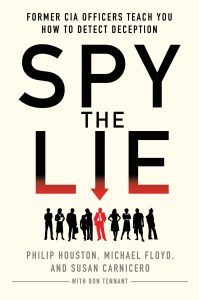Liar, Liar!!! Deceptions in Communication
 As small and medium business owners we tend to perform a multitude of tasks. This makes it imperative to have a framework to figure out communication nuances. Just so that you are more effective in your business negotiations and team interactions. And, you have the ability to figure out deceptive behaviour.
As small and medium business owners we tend to perform a multitude of tasks. This makes it imperative to have a framework to figure out communication nuances. Just so that you are more effective in your business negotiations and team interactions. And, you have the ability to figure out deceptive behaviour.
There is no denying the fact that untruthfulness lies at the heart of all too many problems we face as a global community. Since times immemorial, mankind has resorted to the use of lies in a variety of situations. This process of being untruthful has, unfortunately, become an inherent part of human behaviour. And seemed to have cemented itself in the last few years. Some behavioural research has suggested that, on an average, we tell at least ten lies in a twenty-four hour period. These include the so-called “white lies” that we tell in order to avoid hurt or conflict.
Spy The Lie

Image downloaded from qverity.com
A few years ago, I had the opportunity to spend ninety minutes with Phillip Houston. He is one of the authors of a book called Spy The Lie and was a career officer of the Central Intelligence Agency (CIA). A polygraph examiner of repute, Phillip is credited with being the architect of a deception detection technique. This, unlike polygraph machines, is not intrusive. So effective was his technique that it not only became the standard for the CIA but also was adopted by intelligence and law enforcement agencies worldwide.
Upon his leaving the Agency he, along with his former colleagues Michael Floyd and Susan Carnicero, offered their services to the corporate world. They also wrote the above mentioned book that, they hoped, provides the community at large with the tools to navigate the deception detection obstacle course.
According to the authors, at any given moment we human beings are either visually dominant or auditorily dominant. They state the trick is to train our brains to go into, what they call, “the L-sqaured mode”. i.e. to look and listen simultaneously. Getting your brain to do this will be difficult initially, given the dominance of either visual or auditory. However, with practice the brain will get conditioned to going into the L-squared mode in every conversation.
Some Characteristics of Deception in Communication
I strongly recommend you read the book to get a better insight. But highlighted here are a few pointers you can keep in mind while communicating. This is not intended to make you doubt everyone you speak to. This is only to provide you with a basic framework you could use in difficult situations. But keep in mind the “cluster rule” – you need more than a single behaviour to indicate deception. Just one behaviour by itself may not lead you to the right conclusion as the circumstances for a truthful answer may not have existed at that point in time.
- Failure to answer: when a person is asked a question and does not give you what you ask for.
- Denial problems: the absence of an explicit denial of something that involves an act of wrongdoing. This can take place in the following forms:
- Non-specific denial: where the “no” statement is delivered with a more general focus than a specific expression of denial of the matter on hand. For example, “I would never do something like that” as opposed to “I did not do that”.
- Isolated delivery of denial: where the denial is in the form of a long-winded answer rather than a direct “no”.
- Refusal to answer: where the question posed is not answered but deflected or dodged. For example: “I may not be the right person to talk to”.
- Repeating the question: very often this is done to buy time and think through the answer before replying.
- Non-answer statements: like 4 above, this also is a time-buying technique. For example “That’s a good question”.
- Inconsistent statements: inconsistency in the various statements made without any explanation as to why the inconsistency arose.
-

An interesting book
Going into attack mode: this is often used when the person is pushed into a corner and believes going into an attack mode will make you back off.
- Inappropriate questions: answering a question with a question that has no relevance to the question asked.
- Overly specific answers: when the answer is too technical or too narrow. This could also take the shape of inundating you with too much information.
- Inappropriate level of politeness: where the person concerned has become too polite for the circumstances to warrant it.
- Inappropriate level of concern: where the person attempts the strategy of diminishing the importance of the issue at hand.
- Process or procedural complaints: where the person concerned goes into an offence, without becoming attacking, rather than defence.
- Failure to understand a simple question: where the person feigns not understanding the question and tries to shrink the magnitude of it to reply.
- Invoking religion: when god, in any form, is brought into the reply the person is engaging in “dressing up the lie”
- Selective memory: where the person tries to get away by stating “I don’t remember this”.
- Qualifiers: where the person uses exclusion and perception qualifiers like for the most part, fundamentally or to be perfectly honest
 This framework by itself is by no means a definitive process to detect deception for there is no such thing as a human lie detector. But collectively these factors, when applied without any bias, protects you from being deceived. Please be aware that communication is largely non-verbal than verbal and realize that human behaviour isn’t necessarily logical or conforms to our expectations.
This framework by itself is by no means a definitive process to detect deception for there is no such thing as a human lie detector. But collectively these factors, when applied without any bias, protects you from being deceived. Please be aware that communication is largely non-verbal than verbal and realize that human behaviour isn’t necessarily logical or conforms to our expectations.
So with these nuggets go ahead and protect yourself.

